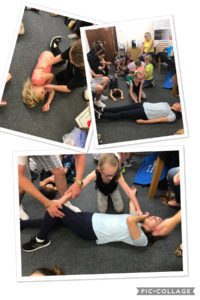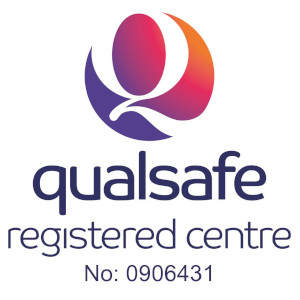Imagine your child knowing exactly what to do if a friend gets hurt on the playground or if a family member becomes unwell. Teaching first aid to children isn’t just about bandages and recovery positions; it’s about empowering them with life-saving skills and confidence that lasts a lifetime. This is why every child should learn first aid.
First Aid Builds Confidence and Reduces Panic
Emergencies can be scary, even for adults. But when children are equipped with the knowledge of what to do, that fear is replaced with confidence. First aid training helps children stay calm and take control of a situation rather than freeze in panic.
Even at a young age, children can learn how to recognise an emergency, dial 999, and give clear information to the operator. They learn how to stay safe themselves while helping others, which reduces their fear of “doing the wrong thing.” This kind of early empowerment helps children feel capable and in control, not just in emergencies, but in everyday life.
Giving a child the tools to respond rather than react can make all the difference in a crisis. It turns them from a bystander into a potential helper and that’s a powerful lesson to learn early on.
Life-Saving Skills From a Young Age
Children are often underestimated when it comes to handling serious situations but with the right training, they can become confident, capable first responders in emergencies. First aid isn’t just for adults. Teaching children these life-saving skills from a young age can have a huge impact, not just on the people they might help, but on their own development and sense of self-worth.
Basic first aid skills such as recognising if someone is unresponsive, checking for breathing, placing someone in the recovery position, and calling 999 can all be taught in a child-friendly way. With clear instructions, role play, and simple language, children quickly understand the steps they need to take and more importantly, why they matter.
Older children can be introduced to more advanced techniques, such as how to start chest compressions during CPR, how to help someone who is choking, and how to deal with common injuries like burns, cuts, or nosebleeds. These aren’t just abstract ideas, they are real-world situations children might witness at home, at school, or out with friends.
Imagine a child knowing how to calmly help a parent who collapses, or how to assist a younger sibling who’s having an allergic reaction. In those critical moments, the knowledge of what to do could be the difference between life and death.
But it’s not just about emergencies. Learning these skills helps children become more aware of safety and risk in everyday life. They start to think about how to prevent accidents, how to respond responsibly, and how to keep themselves and others safe.
Giving children access to first aid training is like giving them a toolkit for life, one that builds resilience, calm thinking, and readiness to act when it matters most.
Encourages Responsibility and Empathy
Teaching first aid to children isn’t just about physical skills, it’s also about shaping the kind of people they grow up to be. Learning how to help someone in distress naturally fosters empathy, compassion, and a sense of responsibility for those around them.
When children are taught first aid, they begin to see the world differently. They learn to look out for signs that someone might need help, to check if someone is okay, and to understand how their actions can make a big difference. It’s an important shift from thinking only about themselves to becoming aware of the needs and wellbeing of others.
This kind of learning also helps build emotional intelligence. Children begin to understand how people might feel when they’re hurt, scared, or unwell, and they learn how to respond calmly and supportively. This awareness can improve friendships, reduce bullying behaviours, and make children more considerate and caring in everyday life.
Responsibility is another powerful outcome. Knowing that they could be the one to help in an emergency, whether it’s a grazed knee on the playground or a relative feeling unwell, gives children a sense of maturity and purpose. They understand that their actions matter, and they start to take pride in being someone others can rely on.
These life lessons go far beyond first aid scenarios. They build character, increase self-esteem, and help children grow into thoughtful, community-minded individuals who aren’t afraid to step up when it counts.
Reduces the Impact of Injuries
Accidents can happen in the blink of an eye; at school, at home, or while out playing. But when a child knows how to respond quickly and appropriately, they can dramatically reduce the severity of an injury and even prevent further harm.
First aid training equips children with the knowledge to take immediate action. For example:
-
A nosebleed can be controlled quickly with the right technique, rather than causing panic or prolonged discomfort.
-
A burn or scald can be treated instantly by running it under cool water—potentially reducing long-term damage or the need for hospital care.
-
A cut or graze can be cleaned and dressed properly, reducing the risk of infection.
By acting fast, children help to stabilise situations before an adult or medical professional arrives. This not only supports the person who’s hurt but also eases the pressure on parents, teachers, or emergency services.
Knowing how to respond also helps children avoid making a situation worse. Instead of guessing or doing something risky, they’ve been taught what not to do, like applying creams to burns or pulling out objects from wounds, common mistakes that can cause more harm than good.
Beyond the physical benefits, the child helping often feels calmer and more in control too. They’re not standing by helplessly; they’re doing something that has a real, positive impact. That sense of purpose helps them manage the stress of the situation and boosts their confidence long-term.
In essence, first aid doesn’t just help the person injured, it protects both the helper and the person being helped from the lasting effects of fear, confusion, or escalating harm.
Common Mistakes!
The question: ‘Why should children be taught first aid?’ We believe this should be; every child should be taught first aid. Sophie knew what to do because she had the first aid training. She knew;
- To be calm
- How to assess the situation and check dangers
- When to call the ambulance
- Check her moms airways
- How to check for normal breathing
- She knew the situation wasn’t right and she needed help
- How to keep engaged with the casualty until the paramedics arrived
- She knew her home address
Common mistakes children have are;
- Children panic and have lack of composure
- Believe the emergency services number is 911 or 101
- Don’t recognise unconsciousness, they believe their parent is sleeping. They pop a blanket on them and carry on playing
- Don’t assess for dangers and they become injured
- Move the casualty and cause further injury
- Delay in treatment, we hear children don’t know how to call 999 or even call for help
- If CPR is needed children don’t know how to start compressions. Or even know when the casualty isn’t breathing
- Can’t recognise what is life threatening
This is Why Every Child Should Learn First Aid! Join a Course TODAY!
First Aid Courses For Children – Why Every Child Should Learn First Aid!
Our first aid courses for children aim to educate children on what to do in an emergency. As a parent, grandparent, caregiver, If you become unconscious would your child help you? If you are the only adult at home, would your child know what to do? Would they know when to call 999, or even know how to? On our first aid courses for children, we will teach children the importance what to do in an emergency and why we need to learn our address. For the older children, we will learn CPR and we will have the opportunity to listen to a defibrillator. Young children will learn about the dangers around the home and how to remove these if they ever come across an injured or unconscious casualty.
Our aim on our summer first aid courses for children is to have fun and to enjoy themselves. No child is pressured to take part if they wish not too. Will you join us on our courses, if you can’t, we are able to come to you at a minimum of 4 children present*.
On our summer courses for children, each child will have the opportunity to learn:
• What to do in a First Aid incident
• How and when to get adult help, and when to call 999.
• How to put someone into a recovery position
• Treat burns, cuts and bruises
• How to treat a bad cut (our bandages will be out) and to treat a nose bleed
• And finally we can’t miss how to perform CPR and use a defibrillator
*** Brownies and Rainbows don’t forget to bring your books to get your first aid badge signed off. ***
This summer first aid course is 2 hours long, charged at £18.99 per child.
All children will receive a certificate of attendance.
To book onto the First Aid course please email: info@hmbtrainingservices.co.uk or call 01543 453338 / 07506 906641 payment in full is required to confirm and book your place. Or to visit https://www.hmbtrainingservices.co.uk/latest-news/offer/first-aid-for-children
*maximum numbers of 12 children on the first aid course.



